by Adeleke Adesanya
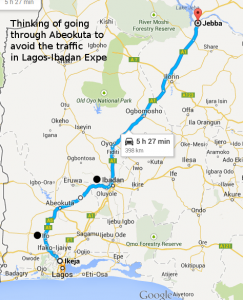 Jebba is a little town in Kwara State, on the border with Niger State. It was briefly the first capital of the British protectorate of Northern Nigeria. Juju Rock, my destination, is a island-hill formation in the River Niger, off Jebba. Like many such rocky hills in the middle belt, it is quite massive. If you have ever paid to see Olumo Rock, you should ask for your money back as it is many times larger and the climb, higher. Plus you have to cross the River Niger on a frail wooden canoe to get there.
Jebba is a little town in Kwara State, on the border with Niger State. It was briefly the first capital of the British protectorate of Northern Nigeria. Juju Rock, my destination, is a island-hill formation in the River Niger, off Jebba. Like many such rocky hills in the middle belt, it is quite massive. If you have ever paid to see Olumo Rock, you should ask for your money back as it is many times larger and the climb, higher. Plus you have to cross the River Niger on a frail wooden canoe to get there.
My first sight of Juju Rock , was as a teen. I had spent some time holidaying with relatives at Life Camp, Jebba . Life Camp is the residential estate of NEPA. During our time there, we went on an excursion to see the usual sites: the burial site of Mongo Park, the monolith erected to honour him and an extensive tour of the hydro electric power station. It was impressive to my teenage eyes. But just before we left the power station, I sighted from afar, a rocky formation, right in the middle of the river. I said to Dad, “Can we go there?,” pointing at the hill. He did not respond.
Fast forward to couple of years ago. I was on eBay, minding my business when I came across a familiar image. It was a postcard of the same hill. Some white dude travelled to Jebba, took pictures of iconic sites in the town like the market place, the railway station and of course Juju Rock, and made postcards out of them. I googled for more information and realised that tourists have been visiting and picnicking on the hill for years. At that point, I made up my mind to go back for a revisit, intending this time, to land on the hill.
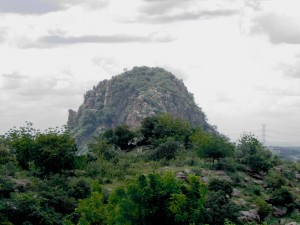 Doing the maths was easy. Ilorin was about six hours journey, driving from Lagos. Jebba was a bit more. I have driven to Ilorin twice before. There was a decent Guest House at Life Camp, Jebba, that I remember and I could lodge in. Three days was enough, two days driving to and fro and resting, and one whole day in Jebba. It could not be too hard. The only essentials were good music and a travelling companion, to make the journeys easier to bear. However, I almost gave up , having been turned down by practically every male relative or close friend I had. Unexpectedly, a complete stranger agreed, during a social media chat, to join me on my odyssey. I could never have expected that.
Doing the maths was easy. Ilorin was about six hours journey, driving from Lagos. Jebba was a bit more. I have driven to Ilorin twice before. There was a decent Guest House at Life Camp, Jebba, that I remember and I could lodge in. Three days was enough, two days driving to and fro and resting, and one whole day in Jebba. It could not be too hard. The only essentials were good music and a travelling companion, to make the journeys easier to bear. However, I almost gave up , having been turned down by practically every male relative or close friend I had. Unexpectedly, a complete stranger agreed, during a social media chat, to join me on my odyssey. I could never have expected that.
Early on 17th September, I met my co-traveller, for the very first time. We got in the Hyundai Accent and set out on our journey at about 9 am. As we drove on, we got to know each other better. Save for some bad patches on the road and some ongoing maintenance work, the forward journey went smoothly. Though we stopped for breakfast and bought bathroom essentials at Ibadan, we made it to Ilorin before 5 p.m. It seemed we would be in Jebba before six. But we were wrong.
 To get to Jebba, we had the option of using either the old single lane road or the new dual lane one. I am aware that the New Road has been under construction for over five years with little progress. I was advised at Ilorin not to attempt the New Road as it is not motor-able. So we took the Old Road. It turned out to be a long stretch of mostly earth road, with broken down lorries obstructing the way. I often had to drive on an off-road bush part, just to move ahead. Finally, we arrived at Jebba at around 9 pm. The town was asleep.
To get to Jebba, we had the option of using either the old single lane road or the new dual lane one. I am aware that the New Road has been under construction for over five years with little progress. I was advised at Ilorin not to attempt the New Road as it is not motor-able. So we took the Old Road. It turned out to be a long stretch of mostly earth road, with broken down lorries obstructing the way. I often had to drive on an off-road bush part, just to move ahead. Finally, we arrived at Jebba at around 9 pm. The town was asleep.
I drove across the Jebba Bridge, heavily guarded by the Nigerian Army to Life Camp, where I intended to lodge at the Guest House. It was easy to locate, with the detailed directions of some locals we met along the way. However, on reaching the Guest House, we were informed by the armed security there that it had been closed. The new owners of the privatised Jebba Dam (and Kainji Dam) had decided to stop offering the Guest House to outsiders commercially. Luckily, the same security folks were helpful in giving directions to the other safe place Colony Guest House, that was in the paper mill residential estate. I drove through the night, back to town and to the other camp where we checked into Colony Guest House. It was past 10 pm and we were fatigued but grateful that we had arrived safely.
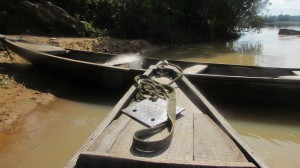 The next morning, I had the leisure to do a little reconnaissance of the town, in day light. The notable industries in the town were the railway, the power station and the paper mill. With the downturn of the latter two, Jebba was now mainly a transit town for transporters going up north. Bad roads and according to local reports, strife between Niger and Kwara state local government officials was impacting access to its iconic tourism sites. The guest house in which I stayed was a shadow of its past glory. Some light sockets and taps did not work but the staff were hospitable and engaging. I got talking to the housekeeper, who happened to be a former NEPA staff. He agreed to be our adhoc tour guide.
The next morning, I had the leisure to do a little reconnaissance of the town, in day light. The notable industries in the town were the railway, the power station and the paper mill. With the downturn of the latter two, Jebba was now mainly a transit town for transporters going up north. Bad roads and according to local reports, strife between Niger and Kwara state local government officials was impacting access to its iconic tourism sites. The guest house in which I stayed was a shadow of its past glory. Some light sockets and taps did not work but the staff were hospitable and engaging. I got talking to the housekeeper, who happened to be a former NEPA staff. He agreed to be our adhoc tour guide.
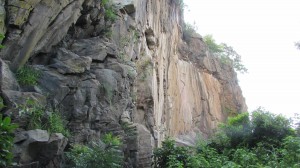 We had breakfast at Jebba Dam Power Station staff canteen and met a friendly top personnel at the dam, who enabled our tour of the facility. Unfortunately, I did not have a memory card in my camera, so no pictures. Plus, my primary interest was Juju Hill. So we left the power station and went back to town, I got new memory cards, then engaged another tour guide, who was a local.
We had breakfast at Jebba Dam Power Station staff canteen and met a friendly top personnel at the dam, who enabled our tour of the facility. Unfortunately, I did not have a memory card in my camera, so no pictures. Plus, my primary interest was Juju Hill. So we left the power station and went back to town, I got new memory cards, then engaged another tour guide, who was a local.
With the local guide, we then visited Mongo Park’s cenopath and park. The park had a wonderful view and I took lots of pictures. I wished to stay longer but it was past eleven and I had yet to reach Juju Hill. So we left and took a wooden canoe ride across the river, to our island destination. At about noon, we finally arrived.
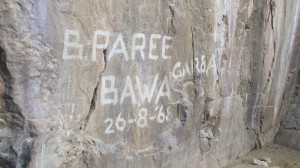 The island was uninhabited and much of the rock was untrespassed. My guide said there was a path carved through the rock that leads from a side to the other. I wanted to climb the hill but that was not to be. Much of it was overgrown with shrubs and thorny weeds and you needed a machete to cut a way through. I sighted numerous birds, some monkeys and a few bush rodents. I settled on discovering as much as I could on foot without climbing instruments and taking pictures.
The island was uninhabited and much of the rock was untrespassed. My guide said there was a path carved through the rock that leads from a side to the other. I wanted to climb the hill but that was not to be. Much of it was overgrown with shrubs and thorny weeds and you needed a machete to cut a way through. I sighted numerous birds, some monkeys and a few bush rodents. I settled on discovering as much as I could on foot without climbing instruments and taking pictures.
As I wandered around, I noticed that parts of the island was being used for maize and rice farming (under the Fadama project). There was a solitary bull roaming about and my guide explained that the island was ocassionally used as an abattoir. On a section of the rocks , there was a graffiti written by some guy, B. Paree in 1968. After about four hours on the island, we got back to into our canoe, and sailed clockwise round the hill taking more pictures, and then back to the Jebba mainland to prepare for our homeward journey.
_________________
Adeleke Adesanya lives in Lagos. You can engage him on twitter at @startoffs.
2 Comments to Road Trip to Juju Rock so far. (RSS Feeds for comments in this post)